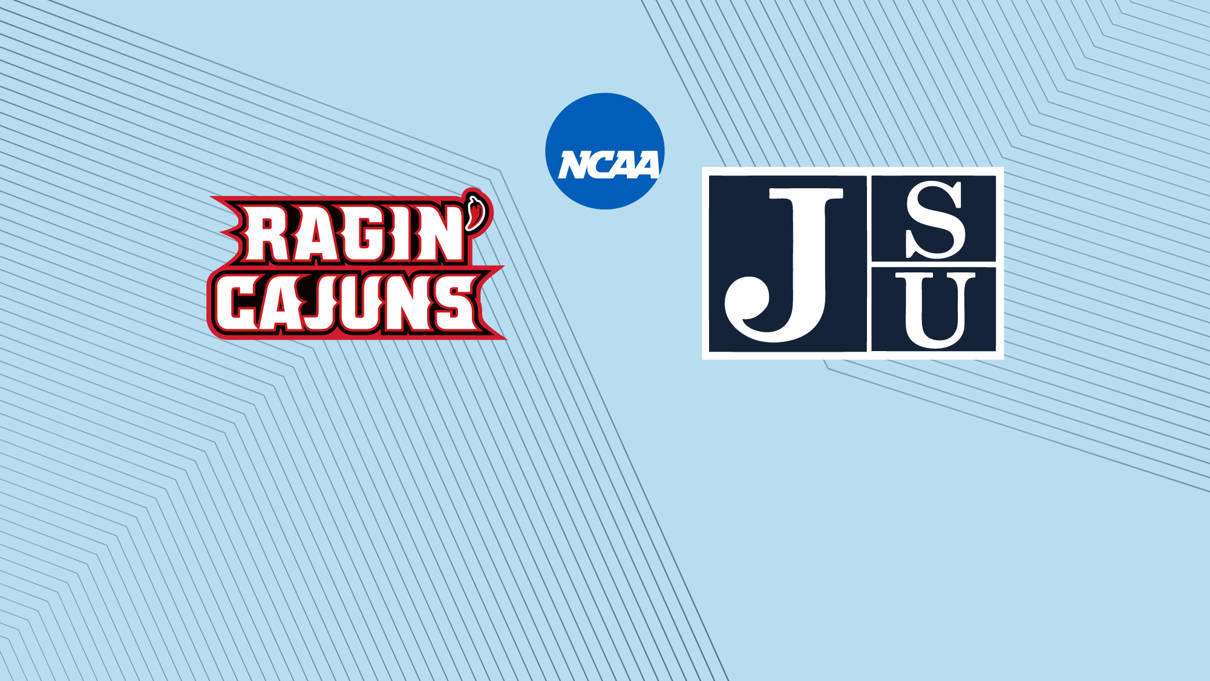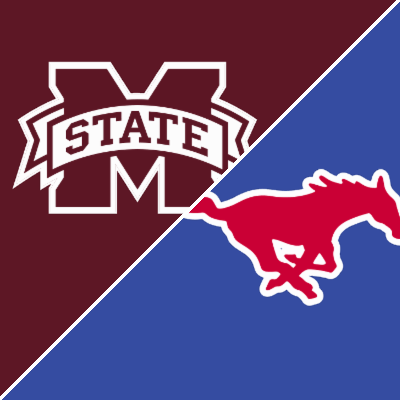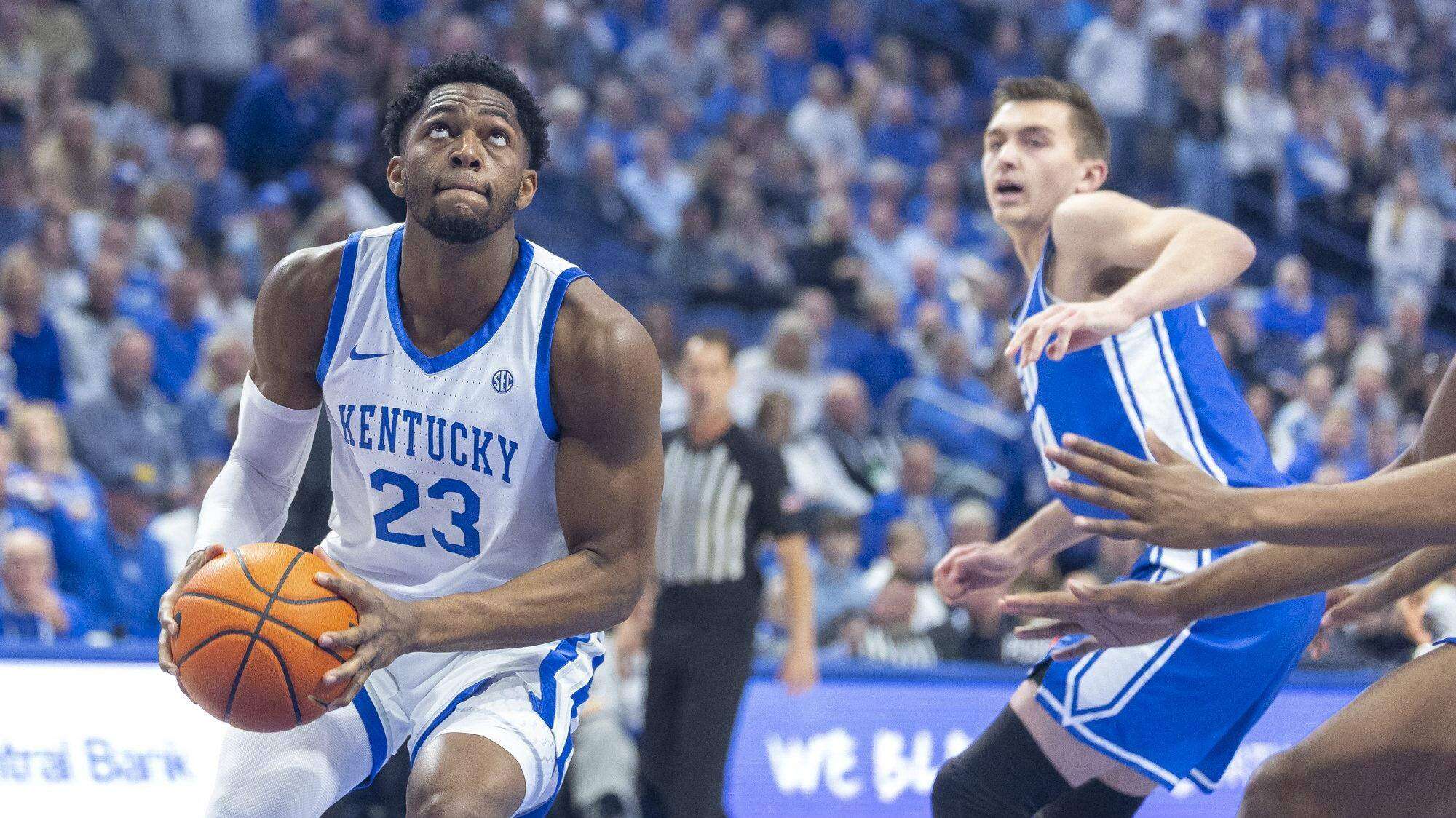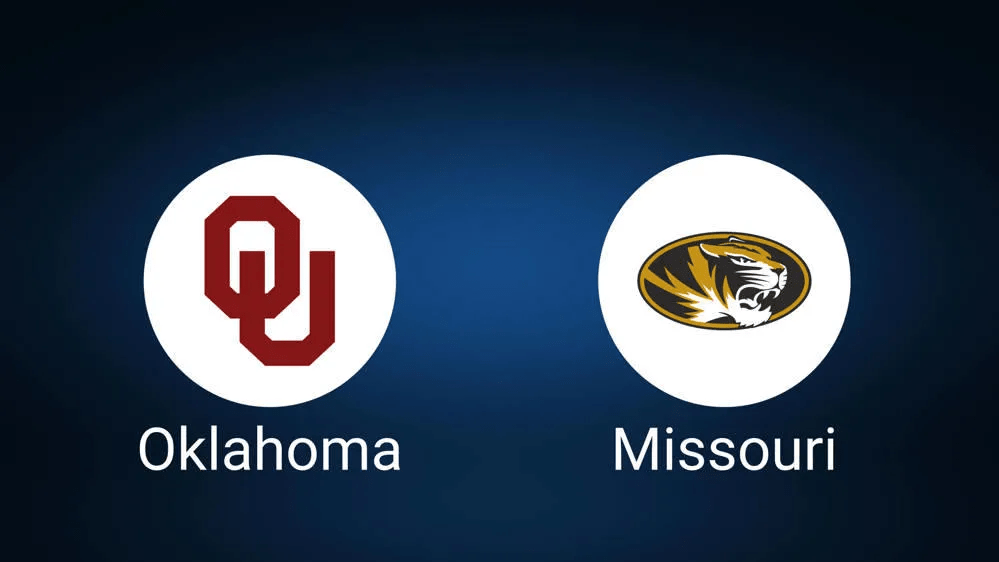Sam Houston Bearkats vs. Idaho Vandals Advanced Game Analysis
Sam Houston Bearkats vs Idaho Vandals Advanced Game Analysis Matchup Preview Table Team Record Points / Game Opp Points
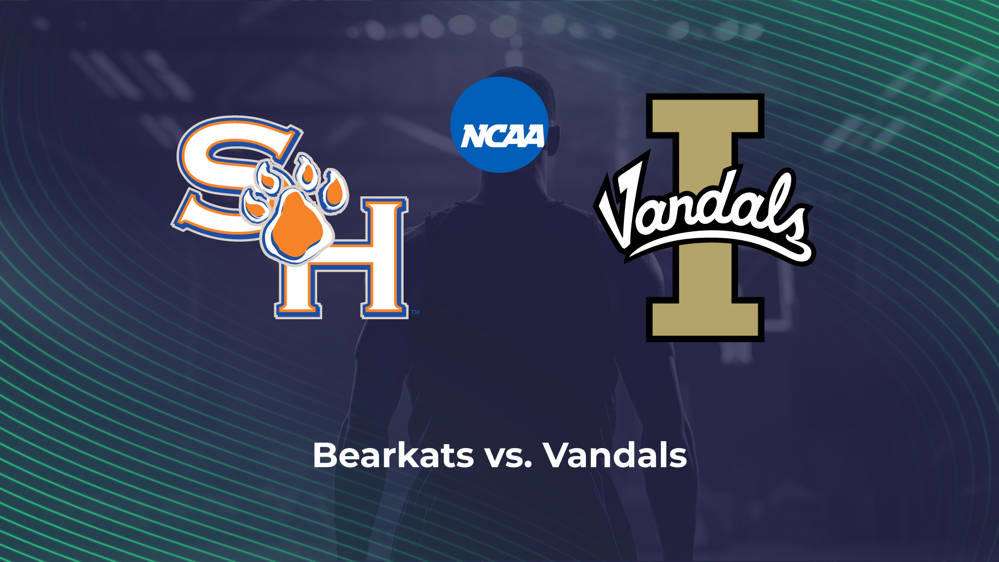
Sam Houston Bearkats vs Idaho Vandals Advanced Game Analysis
Matchup Preview Table
| Team | Record | Points / Game | Opp Points / Game | Avg Score Margin | Eff FG% | 3P% | FT% | Assists / Game | Assists / Turnover | Total Rebounds / Game | Turnovers / Game |
|---|---|---|---|---|---|---|---|---|---|---|---|
| Sam Houston Bearkats | 4-2 | 79.5 (#107) | 83.5 (#300) | -4.0 (#211) | 49.0% (#233) | 31.8% (#220) | 80.9% (#11) | 10.3 (#329) | 0.788 (#306) | 35.5 (#184) | 13.0 (#215) |
| Idaho Vandals | 4-2 | 75.5 (#170) | 74.5 (#162) | +1.0 (#154) | 49.2% (#223) | 32.5% (#197) | 75.8% (#76) | 13.0 (#192) | 1.061 (#190) | 38.3 (#98) | 12.3 (#161) |
Quick Glance Summary Card
Game Snapshot =========================================== Form and Margin - Sam Houston: 4-2, 79.5 PPG (#107), -4.0 margin (#211) - Idaho: 4-2, 75.5 PPG (#170), +1.0 margin (#154) Offensive Level Sam Houston ████████░░░░ 79.5 PPG, 49.0% eFG Idaho ███████░░░░░ 75.5 PPG, 49.2% eFG Defensive Scoring Sam Houston ███░░░░░░░░░ 83.5 Opp PPG (#300) Idaho ███████░░░░░ 74.5 Opp PPG (#162) Rebounding Sam Houston ██████░░░░░░ 35.5 RPG (#184) Idaho ████████░░░░ 38.3 RPG (#98) Ball Security and Creation Sam Houston 10.3 AST (#329), 0.788 A/T (#306), 13.0 TO (#215) Idaho 13.0 AST (#192), 1.061 A/T (#190), 12.3 TO (#161) Headline: Sam Houston leans on free throws, offensive boards and pressure defense, while Idaho brings the steadier half court offense, better rebounding balance and cleaner possession game into a matchup of 4-2 teams.
Team Identity Profiles
Sam Houston Bearkats Team Profile
Sam Houston arrives at 4-2 with a profile built around aggressiveness more than polish. The Bearkats score 79.5 points per game (#107) while allowing 83.5 (#300), which yields a minus 4.0 average scoring margin (#211). Offensively they sit at 49.0 percent effective field goal percentage (#233) and 43.3 percent overall from the field (#210), supported by a 1.081 shooting efficiency index (#192). Those numbers put them in the middle tier nationally, but their game is shaped heavily by how often they get to the line and how hard they crash the offensive glass.
Creation is not a core strength. Sam Houston averages 10.3 assists per game (#329) on a 0.383 assists per field goal made ratio (#356). Their assist to turnover ratio is 0.788 (#306) with 13.0 turnovers per game (#215) and a 15.0 percent turnover per play rate (#172). That indicates a lot of scoring created off individual actions, drive and attack sequences and second chance plays rather than high volume ball movement. The offense is more about forcing the issue than running layered half court sets.
The shooting profile is functional but not elite. Sam Houston hits 31.8 percent from three (#220) on 22.0 attempts per game (#224), making 7.0 threes (#227). Inside the arc they shoot 49.7 percent on twos (#233), a solid but unspectacular mark. The real weapon is at the line. The Bearkats carry a 0.381 free throw attempt rate (#147), generate 23.5 attempts per game (#113) and convert 19.0 free throws (#54) at 80.9 percent (#11). That top tier free throw accuracy turns physical drives into efficient scoring and provides a built in floor for the offense on nights when jump shots are not falling.
Defensively, Sam Houston has work to do. Opponents average 83.5 points per game (#300) on 53.3 percent effective field goal percentage (#242) and 46.0 percent overall shooting (#222). Opponents hit 32.4 percent from three (#156) and 57.3 percent from two (#305). Those splits suggest that while the Bearkats can scramble and generate steals, they often concede good looks once teams break the initial line of pressure or beat them inside. Opponent shooting efficiency at 1.159 (#283) reinforces that they are allowing too many high quality shots.
On the glass, Sam Houston has a distinct split. They average 35.5 rebounds per game (#184), with 12.3 offensive boards (#30) and 19.8 defensive rebounds (#304). Their offensive rebounding rate is a strong 38.6 percent (#17), one of the best nationally, but the defensive rebound rate sits at 61.7 percent (#345). Opponents grab 37.3 boards per game (#230) with 12.3 offensive rebounds (#338). The Bearkats generate a lot of second chance offense but give up almost as many opportunities on their own glass, which keeps games open and high scoring.
Sam Houston does have a disruptive defensive element. They average 8.5 steals per game (#55) with a 9.8 percent steals per play rate (#83), and they force 14.5 opponent turnovers per game (#68) at 16.8 percent turnovers per play (#106). The downside is the foul profile. The Bearkats commit 24.0 personal fouls per game (#357) and 27.7 percent fouls per play (#355), while their opponents commit 19.0 fouls per game (#146). That whistle heavy style creates volatility and feeds into their own free throw advantages, but it also allows opponents to live at the line, especially given the 0.602 opponent free throw attempt rate (#365) and 34.0 opponent attempts per game (#363).
Idaho Vandals Team Profile
Idaho also stands at 4-2, but their profile is more balanced. The Vandals score 75.5 points per game (#170) and allow 74.5 (#162) for a plus 1.0 scoring margin (#154). Offensively, they carry a 49.2 percent effective field goal percentage (#223) and 40.5 percent overall shooting (#293), with a 1.083 shooting efficiency index (#191). Those numbers are similar to Sam Houston in overall efficiency, but they arrive there through a different mix of volume, spacing and ball movement.
The Vandals are more structured in creation. They produce 13.0 assists per game (#192) on a 0.542 assists per field goal made ratio (#146), with a 1.061 assist to turnover ratio (#190). Turnovers sit at 12.3 per game (#161) and 14.9 percent per play (#163). That is not elite, but it is cleaner than Sam Houston’s possession profile. Idaho can run half court sets that move the ball side to side, and they find more assisted buckets as a result.
Shooting wise, Idaho leans heavily on the three point line. They hit 32.5 percent from deep (#197) on 31.5 attempts per game (#14), making 10.3 threes (#42). That combination of volume and adequate accuracy makes the perimeter game a central feature of their offense. Inside the arc, they shoot 49.5 percent on twos (#236), similar to Sam Houston. At the line, they register a 0.384 free throw attempt rate (#137) with 22.8 attempts per game (#133) and 17.3 makes (#107) at 75.8 percent (#76). That is efficient enough to punish undisciplined defenses.
Defensively, Idaho has a middle band profile. Opponents average 74.5 points per game (#162) on 50.7 percent effective field goal percentage (#167) and 44.6 percent overall shooting (#182). Opponent three point percentage sits at 29.0 percent (#60), while opponent two point percentage is 55.7 percent (#272). That split implies that Idaho has done a good job challenging perimeter shooting but is more vulnerable inside. The opponent shooting efficiency index is 1.096 (#179), which is significantly better than Sam Houston’s 1.159 allowed but still not at elite levels.
On the glass, the Vandals show real strength. They average 38.3 rebounds per game (#98) with 10.3 offensive rebounds (#108) and 24.0 defensive boards (#112). Their offensive rebounding rate is 29.9 percent (#148), while their defensive rebounding rate is a robust 79.3 percent (#16). Opponents grab only 32.5 boards per game (#79), with 6.3 offensive rebounds (#11). That combination of strong defensive rebounding and suppression of opponent second chances gives Idaho a structural advantage in possession control.
In terms of disruption, Idaho is mild. They collect 5.5 steals per game (#296) with a 7.1 percent steals per play rate (#284), and they force 10.0 opponent turnovers per game (#318) at 12.8 percent turnovers per play (#300). This is a containment oriented defense rather than a havoc unit. Foul wise, Idaho commits 20.0 personal fouls per game (#267) and 25.7 percent fouls per play (#311), while opponents commit 19.5 fouls per game (#118). That is a moderately high foul rate, but not at the same extreme level as Sam Houston. Opponents do get to the line, as shown by the 0.438 opponent free throw attempt rate (#291) and 24.5 attempts per game (#267).
Team Identity Snapshot Lists
Sam Houston Identity Snapshot
- 4-2 record with 79.5 PPG (#107) and 83.5 opponent PPG (#300), minus 4.0 margin (#211)
- Middle tier efficiency at 49.0% eFG (#233), 43.3% FG (#210) and 1.081 shooting efficiency (#192)
- Moderate three point shooting, 31.8% from three (#220) on 22.0 attempts (#224), 7.0 makes (#227)
- Elite free throw profile, 80.9% FT (#11) with 23.5 FTA (#113) and 19.0 FTM (#54)
- Strong offensive rebounding, 12.3 ORB (#30) with 38.6% ORB rate (#17), but only 61.7% defensive rebound rate (#345)
- High pressure defense with 8.5 steals (#55) and 14.5 opponent turnovers (#68)
- Very high foul rate, 24.0 fouls per game (#357) and 0.602 opponent FTA/FGA (#365) with 34.0 opponent FTA (#363)
Idaho Identity Snapshot
- 4-2 record with 75.5 PPG (#170) and 74.5 opponent PPG (#162), plus 1.0 margin (#154)
- Similar efficiency to Sam Houston, 49.2% eFG (#223), 40.5% FG (#293), 1.083 shooting efficiency (#191)
- High volume perimeter team, 32.5% from three (#197) on 31.5 attempts (#14), 10.3 makes (#42)
- Solid free throw presence at 75.8% FT (#76) with 22.8 FTA (#133) and 17.3 FTM (#107)
- Strong rebounding, 38.3 RPG (#98) with 29.9% ORB% (#148) and 79.3% DRB% (#16), limiting opponents to 32.5 RPG (#79)
- Low takeaway defense, 5.5 steals (#296), 10.0 opponent turnovers (#318) and 12.8% opponent TO rate (#300)
- Moderate foul rate with 0.438 opponent FTA/FGA (#291) and 24.5 opponent FTA (#267)
High Level Team Comparison
At a high level, this matchup sets up as contrast between Sam Houston’s volatility and Idaho’s relative stability. The Bearkats score more points per game and have a far better free throw profile, but they also allow significantly more scoring and lose many defensive rebounding battles. Idaho does not have the same top end offensive output, yet they defend better, rebound more effectively and commit fewer turnovers. Both teams share the same 4-2 record, but the paths they took to reach that mark are very different.
If the game leans into chaos, with frequent fouls, offensive rebounding swings and a faster tempo, Sam Houston’s aggression and free throw edge can create a high ceiling. If the game stays closer to a half court, possession by possession profile, Idaho’s advantages in rebounding, ball movement and turnover control become more prominent. The analytical question is which style is more likely to govern the bulk of the forty minutes.
Given the numbers, Idaho carries the more reliable floor, particularly on defense and the glass, while Sam Houston has the tools to produce bigger scoring runs through free throws, offensive boards and turnovers forced. The outcome will likely reflect which identity wins out more often across segments of the game, rather than any one stylistic blowout.
By The Numbers: Core Matchup Metrics
Scoring and Margin
Points Per Game Sam Houston ████████░░░░ 79.5 (#107) Idaho ██████░░░░░░ 75.5 (#170) Opponent Points Per Game Sam Houston ███░░░░░░░░░ 83.5 (#300) Idaho ███████░░░░░ 74.5 (#162) Average Scoring Margin Sam Houston ████░░░░░░░░ -4.0 (#211) Idaho █████░░░░░░░ +1.0 (#154)
Sam Houston has the more explosive offense by raw scoring, but that is offset by a defense that surrenders 83.5 points per game. Idaho scores fewer points, yet their defense keeps them near even in total margin. Over a large sample, differential often proves more predictive than single game highs, which slightly favors Idaho as the more sustainable profile.
Shooting Efficiency
Effective Field Goal Percentage Sam Houston ██████░░░░░░ 49.0% (#233) Idaho ██████░░░░░░ 49.2% (#223) Three Point Percentage Sam Houston █████░░░░░░░ 31.8% (#220) Idaho ██████░░░░░░ 32.5% (#197) Two Point Percentage Sam Houston █████░░░░░░░ 49.7% (#233) Idaho █████░░░░░░░ 49.5% (#236) Shooting Efficiency Index Sam Houston 1.081 (#192) Idaho 1.083 (#191)
Pure shooting efficiency is almost identical. Idaho has a slight edge in three point accuracy, Sam Houston has a microscopic edge on twos, and overall efficiency is effectively the same. The real differences emerge when volume, free throws and shot distribution are layered on top of these baseline percentages.
Rebounding
Total Rebounds Per Game Sam Houston ██████░░░░░░ 35.5 (#184) Idaho ████████░░░░ 38.3 (#98) Rebounding Gap vs Opponents (Total) Sam Houston 35.5 vs 37.3 (deficit of 1.8) Idaho 38.3 vs 32.5 (edge of 5.8) Offensive Rebounds and Rates Sam Houston 12.3 ORB (#30), 38.6% ORB% (#17) Idaho 10.3 ORB (#108), 29.9% ORB% (#148) Defensive Rebound Percentage Sam Houston 61.7% DRB% (#345) Idaho 79.3% DRB% (#16)
Both teams can generate second chance offense, but Idaho dominates the defensive glass while Sam Houston struggles badly in that area. The Bearkats are one of the best offensive rebounding teams in the country, yet they also allow opponents to crash their own glass at a high rate. Idaho, by contrast, severely limits opponent second chances, which is a major advantage when facing a team that leans heavily on offensive rebounds.
Ball Security and Pressure
Assists and Turnovers - Offense
Sam Houston 10.3 AST (#329)
13.0 TO (#215)
0.788 A/T (#306)
Idaho 13.0 AST (#192)
12.3 TO (#161)
1.061 A/T (#190)
Turnovers Forced - Defense
Sam Houston 14.5 Opp TO (#68)
16.8% Opp TO/play (#106)
8.5 steals (#55)
Idaho 10.0 Opp TO (#318)
12.8% Opp TO/play (#300)
5.5 steals (#296)
Sam Houston applies significantly more pressure, forcing more turnovers and accumulating more steals. However, Idaho is cleaner with the ball and assists a higher proportion of their made shots. The net effect is a clash between a pressure defense that can create extra possessions and a structured offense that is less likely to beat itself. Which side wins this tug of war matters a lot for the final margin.
Fouls and Free Throws
Free Throw Rate (FTA per FGA)
Sam Houston 0.381 (#147), 23.5 FTA (#113), 19.0 FTM (#54)
Idaho 0.384 (#137), 22.8 FTA (#133), 17.3 FTM (#107)
Free Throw Percentage
Sam Houston 80.9% (#11)
Idaho 75.8% (#76)
Opponent Free Throw Profile
Sam Houston 0.602 Opp FTA/FGA (#365),
34.0 Opp FTA (#363),
23.3 Opp FTM (#358)
Idaho 0.438 Opp FTA/FGA (#291),
24.5 Opp FTA (#267),
17.8 Opp FTM (#280)
Both offenses draw plenty of fouls, but Sam Houston converts free throws at a truly elite rate. Idaho is solid at the line but not on the same level. The Bearkats, however, give a lot of that back by sending opponents to the stripe at one of the highest rates in the country. In a whistle heavy game, free throws will be central, with Sam Houston leaning on their conversion edge and Idaho benefiting from Sam Houston’s foul volume.
Advanced Metrics and Tempo Analysis
Tempo in this matchup projects to be moderately high. Sam Houston attempts 61.8 field goals per game (#96) and sees opponents attempt 56.5 (#101). Idaho shoots 59.3 times per game (#178) while opponents attempt 56.0 (#89). Those volumes suggest a game with plenty of possessions, especially if Sam Houston’s aggressive style and foul rate push the pace through transition, free throws and second chance sequences.
From an efficiency standpoint, both teams sit in a similar offensive band, but Idaho has a better defensive efficiency profile. Idaho’s opponent shooting efficiency sits at 1.096 (#179), while Sam Houston’s is 1.159 (#283). That gap represents a meaningful difference in how hard it is to score against each side, even before accounting for foul rates and turnovers. In a higher possession environment, small per possession gaps can translate into noticeable scoring separation over forty minutes.
Shot Profile and Matchup Fit
Sam Houston Offense - 31.8% from three (#220) on 22.0 attempts (#224), 7.0 makes (#227) - 49.7% on twos (#233) - 80.9% at the line (#11) with 23.5 FTA (#113) - 49.0% effective field goal (#233) Idaho Defense - 29.0% opponent three point shooting (#60) - 55.7% opponent two point shooting (#272) - 50.7% opponent effective field goal (#167) - 0.438 opponent FTA/FGA (#291) Idaho Offense - 32.5% from three (#197) on 31.5 attempts (#14), 10.3 makes (#42) - 49.5% on twos (#236) - 75.8% at the line (#76) with 22.8 FTA (#133) Sam Houston Defense - 32.4% opponent three point shooting (#156) - 57.3% opponent two point shooting (#305) - 53.3% opponent effective field goal (#242) - 0.602 opponent FTA/FGA (#365)
Shot profile suggests both teams can find their preferred looks. Sam Houston will see chances at the rim and from the stripe against an Idaho defense that is average inside and allows a fair number of free throws. The Bearkats will need to be prepared for contested threes though, since Idaho has held opponents to 29.0 percent from deep. Idaho, on the other hand, gets an ideal matchup for their three point volume, as Sam Houston has allowed 32.4 percent from three and 8.3 opponent makes per game.
Idaho’s heavy three point volume, combined with Sam Houston’s difficulty defending without fouling and protecting the paint, creates multiple avenues for the Vandals to score. They can stretch the floor with perimeter shooting and then attack inside once the Bearkats are forced to extend. Sam Houston’s best counter involves leveraging their own free throw dominance and offensive rebounding to squeeze extra value from each trip.
Offense vs Defense Matchup Breakdown
Sam Houston Offense vs Idaho Defense
Sam Houston’s offense will test Idaho’s discipline. The Bearkats bring 79.5 points per game, a strong free throw profile and a high offensive rebounding rate into a matchup with a defense that has been good against the three but more vulnerable on twos. The key for Sam Houston is to attack downhill and accept physical contact rather than settling for contested jumpers over a defense that has done well limiting perimeter accuracy.
If Sam Houston can maintain their 23.5 free throw attempts and 80.9 percent conversion, they can force Idaho to adjust rotations and play with more caution. Offensive rebounds at 12.3 per game will produce additional chances for fouls and close range finishes. The main concern is whether the Bearkats can create enough quality looks in the flow of the offense, given their low assist volume and reliance on individual action. Idaho’s stronger defensive rebounding could also reduce second chance opportunities compared to Sam Houston’s usual baseline.
Idaho Offense vs Sam Houston Defense
On this side, Idaho’s spacing driven offense faces a defense that has struggled with efficiency and fouls. The Vandals’ 10.3 made threes per game at 32.5 percent can give Sam Houston problems, especially if rotations are a step late or closeouts are inconsistent. The Bearkats have allowed 8.3 made threes per game and 32.4 percent opponent accuracy, which sits in the range where Idaho can reasonably expect to hit or exceed its average.
Inside, Idaho’s 49.5 percent two point shooting should benefit from a Sam Houston defense that concedes 57.3 percent from two. The Bearkats often rely on help and scramble coverage that can leave gaps at the rim once the initial action is beaten. Idaho can capitalize by using ball screens, cuts and drive and kick actions that force multiple rotations.
The foul dynamic is also important. Sam Houston’s 0.602 opponent free throw attempt rate and 34.0 opponent free throw attempts per game effectively invite opponents to live at the line. Idaho, already at 22.8 attempts and 75.8 percent, is well positioned to benefit if the Bearkats do not defend with more discipline than their season baseline.
Offensive Edge
Offensive Edge Meter Sam Houston ████████░░░░ - 79.5 PPG (#107) - 49.0% eFG (#233) - 31.8% from three (#220) - 80.9% FT (#11), 23.5 FTA (#113), 19.0 FTM (#54) - 10.3 assists (#329), 0.788 A/T (#306) Idaho ██████░░░░░░ - 75.5 PPG (#170) - 49.2% eFG (#223) - 32.5% from three (#197) on 31.5 attempts (#14) - 75.8% FT (#76), 22.8 FTA (#133), 17.3 FTM (#107) - 13.0 assists (#192), 1.061 A/T (#190) Net Offensive Edge: Slight tilt to Sam Houston in raw scoring, free throw accuracy and offensive rebounding, with Idaho holding an edge in perimeter volume and assisted creation.
Defensive Edge
Defensive Edge Meter Sam Houston ███░░░░░░░░░ - 83.5 Opp PPG (#300) - 53.3% Opp eFG (#242) - 32.4% Opp 3P (#156) - 57.3% Opp 2P (#305) - 14.5 Opp TO (#68) but 0.602 Opp FTA/FGA (#365) and 34.0 Opp FTA (#363) Idaho ███████░░░░░ - 74.5 Opp PPG (#162) - 50.7% Opp eFG (#167) - 29.0% Opp 3P (#60) - 55.7% Opp 2P (#272) - 10.0 Opp TO (#318) with 0.438 Opp FTA/FGA (#291) and 24.5 Opp FTA (#267) Net Defensive Edge: Idaho, due to lower opponent scoring, better three point suppression and fewer free throws allowed, even with a modest takeaway profile.
Style Matchup and Tempo Projection
Stylistically, Sam Houston will be comfortable in an up tempo, high contact game where offensive rebounds, free throws and turnovers shape the flow. Idaho will prefer a controlled tempo that highlights half court execution, perimeter spacing and strong defensive rebounding. Both teams have enough possessions per game that a medium to fast pace is the most likely outcome, but Idaho’s rebounding and cleaner possession game should keep them from being dragged into pure chaos unless Sam Houston dominates the foul and turnover battles.
The game likely settles into phases. When Sam Houston’s pressure generates steals and quick trips to the line, the Bearkats can string together short scoring runs. When Idaho stabilizes the ball and controls the glass, their perimeter shooting and free throw efficiency should slowly tilt the scoreboard. The winner is likely the team that can impose its preferred style for longer stretches rather than with a single tactical choice.
Key Tactical Battlegrounds
- Defensive rebounding for Sam Houston: If the Bearkats continue to rebound defensively at 61.7 percent, Idaho’s misses may turn into extended possessions and open threes.
- Idaho’s three point volume: At 31.5 attempts and 10.3 makes per game, the Vandals can separate if Sam Houston cannot contest the arc consistently.
- Free throw gap: Sam Houston’s 80.9 percent at the line is a weapon, but only if they turn their drives into high volume attempts. Idaho’s ability to defend without excessive fouling is critical.
- Turnover differential: Sam Houston needs to capitalize on its better takeaway profile. If Idaho holds turnovers near 12, the Bearkats lose one of their biggest comparative advantages.
- Offensive rebounding vs Idaho’s DRB%: A direct clash between Sam Houston’s 38.6 percent offensive rebound rate and Idaho’s 79.3 percent defensive rebound rate will dictate second chance scoring.
In Game and Live Angle Notes
- Idaho early threes: If the Vandals quickly find success from deep, it indicates that Sam Houston’s perimeter coverage is not closing the space needed to slow the volume.
- Sam Houston foul count by the middle of the first half: High early foul numbers will point to Idaho being able to live at the line and lean on their own free throw efficiency.
- Offensive rebound tracking: If Sam Houston is not generating their usual second chance volume, Idaho’s rebounding advantage may blunt one of the Bearkats main weapons.
- Turnovers for Idaho’s guards: A low turnover first half for Idaho strongly favors their side of the projection, while a spike into the mid teens for the game brings Sam Houston’s pressure into play.
Key Players and Unit Impact
Sam Houston Bearkats
For Sam Houston, the backcourt and wings driving the attack carry significant responsibility. With only 10.3 assists per game and a 0.788 assist to turnover ratio, primary ball handlers must balance aggression with better decision making to avoid empty possessions. Their ability to initiate contact, get downhill and draw fouls feeds directly into the 80.9 percent free throw mark that anchors the Bearkats offensive efficiency.
Perimeter shooters provide the spacing that allows those drives to work. At 31.8 percent from three on 22.0 attempts, Sam Houston does not live entirely at the arc but needs timely contributions from multiple shooters to prevent Idaho from sitting in the lane. Kickout threes off offensive rebounds are especially important against a defense that guards the first shot relatively well but may be challenged if forced into late shot clock closeouts.
Frontcourt players are central to the Bearkats identity. With 12.3 offensive rebounds per game and a 38.6 percent offensive rebounding rate, bigs and physical wings who crash the glass can tilt the possession balance. Their work on the defensive boards may matter even more in this matchup, since lifting the 61.7 percent defensive rebound rate toward a more neutral number is key to preventing Idaho from controlling the game through second chance denial.
Idaho Vandals
For Idaho, the perimeter rotation that generates 10.3 made threes per game is the primary engine. Guards and wings who can handle the ball, make reads and hit catch and shoot opportunities stretch Sam Houston’s defense horizontally. Their decisions in ball screens and dribble handoffs will determine how frequently Idaho can generate high value threes versus contested shots.
Secondary playmakers are also important. With 13.0 assists per game and a 0.542 assists per field goal made ratio, multiple Vandals contribute to unlocking the defense. If those secondary creators maintain the current assist levels while keeping turnovers at 12.3 or lower, Idaho’s efficiency should outpace Sam Houston’s in extended half court sequences.
In the frontcourt, Idaho’s bigs serve as anchors on the defensive glass and versatile finishers on offense. Their 79.3 percent defensive rebound rate and 10.3 offensive rebounds per game are driven by consistent box outs, strong hands and good positioning. Against a team that thrives on offensive rebounds, their ability to finish possessions with one shot and out is a central pillar of Idaho’s game plan.
Coaching Impact
Sam Houston’s staff leans into a style that embraces variance. By encouraging aggressive drives, offensive rebounding and pressure defense, they raise both their ceiling and their exposure to foul trouble and defensive breakdowns. In this matchup, coaching decisions about how hard to crash the glass, when to ramp up full court or passing lane pressure and how to manage foul heavy rotations will heavily shape the game script.
Idaho’s staff, in contrast, aims for a more balanced approach. The emphasis on perimeter volume combined with strong defensive rebounding suggests a philosophy that values shot quality and possession control. Against Sam Houston, the coaches will focus on limiting live ball turnovers, keeping the defensive glass clean and avoiding unnecessary fouls that turn baseline Bearkats drives into automatic free throw scoring.
In game adjustments will revolve around handling the three point line and free throw dynamics. If Sam Houston is getting to the line at above their usual volume, Idaho may need to adjust help principles and verticality. If Idaho’s three point volume is not translating into efficient scoring, they may have to emphasize more paint touches and post actions to stress Sam Houston’s interior defense.
Risk Matrix and Scenario Tree
Scenario 1: Idaho Controls the Glass and Threes - Vandals hold Sam Houston below usual offensive rebound rate and keep second chance points limited. - Idaho hits near their 10.3 made threes at around 33 percent. - Turnovers stay around 12 and free throws remain balanced. - Likely Outcome: Idaho wins by multiple possessions, with a margin in the high single digits. Scenario 2: Sam Houston Free Throw and Offensive Rebound Surge - Bearkats generate 25+ free throw attempts and convert near 80 percent. - Offensive rebounding climbs beyond season average, with multiple extended possessions translating into points. - Turnovers forced rise above Idaho’s baseline, creating runout opportunities. - Likely Outcome: Sam Houston pushes the game into the mid 80s and edges out a narrow win. Scenario 3: Foul Driven Variance - Whistles dominate, with both teams taking 25 to 30 free throws. - Rotations are impacted by foul trouble for key frontcourt or backcourt players on either side. - Likely Outcome: Game becomes more random, with the winner defined by free throw execution and bench depth rather than pure efficiency. Scenario 4: Cold Night From Three for Idaho - Vandals fall significantly below 30 percent from three while maintaining similar volume. - Sam Houston’s pressure forces a few extra turnovers and transition chances. - Likely Outcome: Idaho’s offense stalls enough to bring the game into a coin flip despite their rebounding edge.
Simulation Model and Expected Distribution
Simulating this matchup over many hypothetical games using this season’s numbers produces a distribution that tilts slightly toward Idaho. Their advantages in defensive efficiency, rebounding control and cleaner possession structure consistently show up across runs. When Idaho plays to its baseline, it often keeps Sam Houston from turning offensive rebounds and free throws into an overwhelming edge, while leveraging its own three point volume to build or maintain leads.
Sam Houston still appears as a live side in scenarios where their pressure defense generates extra turnovers, their offensive rebounding significantly outperforms Idaho’s usual defensive standard, or whistle patterns give their elite free throw shooting enough weight to swing the scoring balance. Those games tend to be higher scoring and more volatile, matching Sam Houston’s season long identity.
Overall, the expected distribution points to Idaho as a small but clear favorite in a game that is likely to feature stretches where both teams lean on their strengths. The Vandals are better positioned to win a solid, possession focused contest, while the Bearkats are best served by pushing the game toward a higher variance environment.
Final Forecast and Edge Summary
Key edges can be summarized as follows:
- Offensive efficiency and scoring: Slight edge to Sam Houston in raw scoring and free throw efficiency, with overall shooting efficiency nearly identical.
- Defensive performance: Clear edge to Idaho, which allows fewer points, lower effective field goal percentage and far fewer free throws.
- Rebounding: Offensive rebounding advantage for Sam Houston, defensive rebounding and overall suppression advantage for Idaho.
- Turnovers and pressure: Sam Houston has the better takeaway numbers and more steals, while Idaho takes better care of the ball and runs more assisted offense.
- Free throws: Sam Houston is elite at the line at 80.9 percent, but also yields a very high volume of opponent free throws. Idaho is solid at drawing and making free throws and can benefit if the game is called tightly.
Taken together, these factors suggest Idaho holds the more stable path to a win, especially if they maintain control of the defensive glass and avoid a turnover spike. Sam Houston’s best winning script involves leveraging offensive rebounds, free throws and pressure defense to generate extra possessions and high value scoring opportunities.
Final Projection
Projected Score: Idaho Vandals 78, Sam Houston Bearkats 74
The projection leans toward Idaho by two possessions. The Vandals are expected to control the glass sufficiently to blunt Sam Houston’s second chance edge, while their three point volume and free throw production provide enough scoring to offset the Bearkats free throw advantage. Sam Houston can absolutely pull the game into upset territory if they own the offensive boards and convert an above baseline share of turnovers into points, but Idaho’s rebounding and overall defensive metrics give them the statistical nod.
For the best odds on NCAA basketball games, visit bet105, the top sportsbook with reduced juice, fast crypto payouts, and sharp friendly limits.
Standard Disclaimer
This analysis uses AI assisted statistical research alongside human analysis and editorial oversight. Despite verification efforts, data errors may occur. Readers should independently verify odds, team stats, and records before betting. Projections are analytical estimates, not guarantees.

